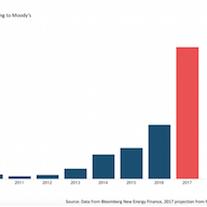Hewlett Packard's Mission to Eradicate Illiteracy in India


HP inc knows a thing or two about poverty in India. It's been at the forefront of an effort lately to eradicate illiteracy in India's small towns, where residents often suffer from a cyclical challenge of poor access to education, limited job options and decimating malnutrition.
Last February the company rolled out the first of several buses designed specifically to combat that challenge. The World on Wheels project, a joint project of HP and SRF Foundation, made its maiden journey last February when the company unveiled the first bus containing 48 self-contained digital inclusion learning labs. Each lab is internet-ready and can be adapted for a variety of learning modules, including business training for entrepreneurs, e-learning and other services. The 48 buses hope to reach as many as 6,400 villages and 15 million people in the next 6 years.
And it's small rural villages like Harisal, deep in the undeveloped forests of central India, far from cities like Mumbai and new Delhi that will benefit from HP's ingenuity. Harisal, in the state of Maharashtra, is known for its poor literacy rates and high levels of malnutrition. The state, realizing that fighting endemic poverty requires a multi-pronged effort, upgraded the village's healthcare system. In April, HP took another step by partnering with the Maharashtra to create the country's first digitally equipped village.
This week, HP upped the ante even further by committing $20 million toward improving educational resources for the world's poorest members. The money will go toward improving technology, training, research and development and other needs that can help boost better learning incomes in remote, impoverished communities. The new commitment will also allow the company to continue to offer its innovative solutions like World on Wheels and Learning Studios, as well as partner with governments and policy makers on ways to ensure that citizens have the best access to education, irrespective of where they live.
"Solving the problem of global poverty is no easy feat, but ensuring children and adults have access to a quality education is a vital building block for sustainable development," wrote Nate Hurst, HP's chief sustainability and social impact officer in a recent Just Means post. "By empowering everyone, everywhere with the skills and opportunities to succeed in the jobs of the future, we can help to break the cycle."
With more than 300 million children throughout the world missing out on school because of endemic poverty, illness, locale or other social factors, HP's announcement is well timed. Today's advances in mobile technology has helped to transform medicine in remote communities in recent years. Perhaps the next achievement will be global literacy.
Flickr image: Jake Guild; JP Davidson
$8 Million for Algae Biofuel from U.S. Department of Energy
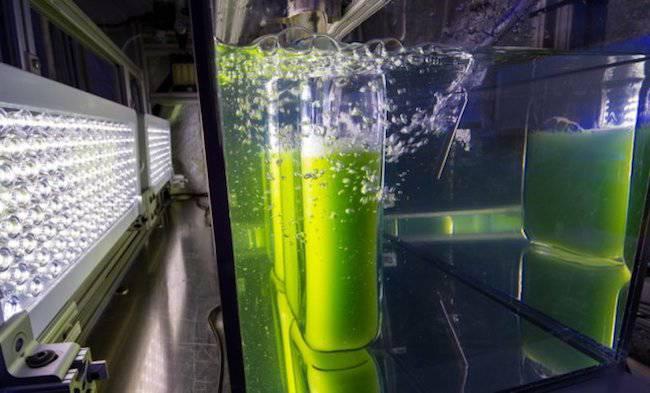

The low price of petroleum has put a crimp in today's biofuel market, but the U.S. Department of Energy has the long view in its sights. DOE is pushing ahead with another round of $8 million in funding aimed squarely at developing next-generation biofuel from algae, leading to "a bioeconomy that can help create jobs, spur innovation, improve quality of life, and achieve national energy security."
Bioeconomy!? That certainly doesn't sound like any kind of language you'd hear from the Trump Administration, but guess what -- this week DOE is hosting the "Bioeconomy 2017" conference in Arlington, Virginia so let's take closer look at those grants.
From food biofuel to algae biofuel
For those of you new to the biofuel topic, liquid fuel sourced from plants has the potential to be carbon neutral, unlike fossil fuels. That's because plants sequester carbon as part of the carbon cycle.
The problem is that until recently the most cost effective, conventional "energy crops" have also been food crops, like corn and soy. Using food for fuel is not a sustainable practice, so for the past several years researchers have been focusing on extracting cost-effective biofuel from plants that don't compete with food for available land.
Some of these second-generation biofuel crops are grasses and weed-type plants that can be farmed on marginal soils where food crops typically don't thrive.
Algae represents the next step -- a third generation energy crop that does not fit into a conventional farming model.
The $8 million represents the maximum funding available for three algae biofuel projects that made it through the rigorous selection process.
If all goes well, DOE expects this group of projects to deliver "high-impact tools and techniques" that will enable researchers to increase oil production in algae organisms, resulting in improved efficiency and lower costs.
By high-impact, DOE means processes that can be used across the biofuel industry, so that $8 million in funding could end up motivating millions more in private investment.
Three new algae biofuel projects
Part of the funding will go to Lumen Bioscience of Seattle, Washington. The company will partner with the National Renewable Energy Laboratory in Colorado (NREL), to develop new strains of algae that can thrive in seawater.
The seawater angle would help overcome one major obstacle to a sustainable, low cost algae industry. Typically, algae is cultivated in fresh water. That has already raised water resource issues, which are bound to intensify with population growth, climate change and other pressures.
The challenge is to find strains of algae that can thrive in seawater without becoming contaminated or succumbing to predation.
If Lumen can prevail, the company intends to create new agricultural jobs in rural eastern Washington, where it intends to locate its production facilities.
Another part of the funds will go to Global Algae Innovations of El Cajon, California. Global Algae will take on the challenges of improving algae production in ponds:
Pond ecology has a major impact on algal health and productivity, yet very little is known about the impacts of bacteria, viruses, protozoa, and fungi.
The company will pair up with Sandia National Laboratories, the University of California at San Diego – Scripps Institution of Oceanography, and the J. Craig Venter Institute to create a low cost system that will enable researchers to analyze pond ecology. The end goal is to put that information to use for developing new, more efficient ways to cultivate algae in ponds.
Rounding out the trio is Los Alamos National Laboratory in New Mexico. Better known for its historic work on nuclear technology, under this grant the lab will also tackle pond-grown algae.
The project will take place at a Las Cruces, New Mexico site in partnership with the company Sapphire Energy. The aim is to reach a better understanding of the way that multiple strains of algae and beneficial bacteria can interact to result in a highly productive environment.
Trump talks up fossil energy, but...
Here's where it gets really interesting. For all the Trump Administration talk about exploiting the nation's fossil resources, somehow the U.S. Department of Energy has managed to keep its sights focused on resource preservation.
The new grants come under the agency's Office of Energy Efficiency and Renewable Energy, which garnered this description in a DOE press release announcing the three awards (emphasis mine):
The Energy Department's Office of Energy Efficiency and Renewable Energy (EERE) accelerates research and development of energy efficiency and renewable energy technologies and innovative solutions that strengthen U.S. energy security and economic vitality, while preserving our natural resources.
Combined with the reference to bioeconomy, the wording is particularly interesting considering that the Trump Administration brought on fossil fuel lobbyist Daniel Simmons to head EERE.
For all his background in the fossil industry, Simmons seems to have had next to no impact on EERE programs, or on the Energy Department's messaging about renewables.
Except for a lull last week while federal budget hearings were under way -- during which time Energy Secretary Rick Perry insisted on positioning climate change denial as a legitimate form of skepticism -- DOE has been pumping out good news about renewables at a furious pace.
This week Perry seems to be making up for lost time. The agency's official @ENERGY Twitter account was even more active than usual on Monday, with a healthy dose of renewable energy news capped by a video salute from Perry to NREL in recognition of its 40th anniversary.
Most interesting of all was a tweet linking to a new Oak Ridge National Laboratory computer model aimed at advancing the study of climate change.
Yes, climate change:
A new integrated computational model reduces uncertainty in climate predictions by bridging Earth systems with energy and economic models and large-scale human impact data. Co-developed by Oak Ridge National Laboratory, the novel integrated Earth system model, or iESM, leverages the power of supercomputers, including ORNL’s Titan, to couple biospheric feedbacks from oceans, atmosphere and land with human activity, such as greenhouse gas emissions, agriculture and land use.
As described by Oak Ridge, the new model “provides comprehensive predictions of projected climate outcomes, eliminating important sources of uncertainty from those predictions.”
The big question is, how does Perry keep getting away with this? Although he toes the Trump Administration line in public appearances, he has consistently supported his agency's renewable energy programs.
DOE and its network of offices and laboratories have also not been shy about discussing climate change, and the DOE website still includes a comprehensive page dedicated to climate change.
The climate change page leads off with this observation:
Addressing the effects of climate change is a top priority of the Energy Department. As global temperatures rise, wildfires, drought, and high electricity demand put stress on the nation’s energy infrastructure. And severe weather -- the leading cause of power outages and fuel supply disruption in the United States -- is projected to worsen, with eight of the 10 most destructive hurricanes of all time having happened in the last 10 years.
The next time you see Perry accommodating climate change deniers, look behind his back -- he might have his fingers crossed!
In the meantime, look forward to the sustainable bioeconomy of the future -- and look forward, at least for the time being, to continued Trump Administration support for renewable energy initiatives that took form under the Obama Administration.
Photo (cropped): via @ENERGY on twitter.com.
As Walmart Stores Close, Communities Suffer Economic Fallout


The emergence of a new Walmart store in a community has long festered angst and protests. The Arkansas-based retail giant says it provides jobs and low prices on everything from groceries to electronics. Community activists often reply that the opening of a new Walmart demolishes local businesses and replaces those jobs with lower-paying wages. That sentiment was behind the drive behind some cities, such as Inglewood, California, to vote and say no to Walmart; the state of Vermont had resisted the chain for years. The truth is somewhere in between: businesses that are adjacent to the big box store, or in its path, may actually experience a boost in foot traffic and sales; workers now score a regular paycheck that previously could have long eluded them.
But as many Walmart stores settled, only to shutter that location after less than a generation, the evidence suggests that the community left behind could find itself in a worse economic lurch than when that store first opened.
One of the more extreme cases is Ed Pilkington’s depiction in the Guardian, which describes what has been occurring in West Virginia’s McDowell County. The rural West Virginia county has long endured economic struggles and has the lowest life expectancy of the 3,100-plus counties in the U.S. While critics of Walmart say the chain contributes to the loss of any local community feeling, McDowell County’s residents had quite the opposite experience after the local superstore opened in 2005. The Walmart superstore became a thriving local gathering place, as well as the point at which shoppers could choose from an abundance fresh foods and jobseekers could find work.
But as Walmart continues to engage in a fierce turf war with Amazon – now heightened with the online marketplace’s recent acquisition of Whole Foods – Walmart has recalibrated its long-term strategy and has closed dozens of stores the past 18 months. McDowell County’s Walmart became one of the recent casualties.
Other cities and their businesses have dealt with the consequences of Walmart opening a store location, only to pack up and leave only a decade later. Seabrook, New Hampshire, was another town that welcomed Walmart despite some locals’ misgivings. As Christopher Peak pointed out in what is practically a textbook case study of how the company often operates, Walmart does what it can to find favorable terms on leasing and taxes as it opens a new store. But should another site promise more lucrative sales – even if it is just down the road, Walmart will pack up and move, leaving nearby businesses and communities behind. And unlike an old brick warehouse or school, those gigantic shells of former big box stores can rarely find a new life – the now-empty stores usually hulk over their former neighborhoods “like a gargantuan concrete coffin.”
Some communities have been able to repurpose old Walmart stores into places that can benefit local residents. The most famous example is in McAllen, Texas, where a former Walmart became a popular public library and community center. Another shuttered Walmart in Wisconsin became a senior citizens center. In Round Rock, Texas, a suburb of Austin, an old Walmart became an indoor raceway and then was eventually razed to become a strip mall. Other big box stores, which housed Walmart’s competitors such as Kmart, have been transformed into churches, charter schools and even a museum dedicated to the history of Spam. Most locations, however, remain abandoned, as their size and layout offer few alternatives for use.
Over the years, critics have pointed out that the benefits of shopping at Walmart for its low prices are often balanced out, or even exceeded, by the costs of the company’s social and economic impacts. Low paying jobs, the cost of funding social welfare programs such as health care for Walmart’s hourly wage employees as well as the shortfall in local tax revenues after municipalities are quick to make exceptions so a new store will open in town are just a few examples. But the economic struggles cities and towns shoulder once Walmart relocates or shutters a location deserve even more study, and in any event will provide even more ammunition to the company’s critics, who have long complained that the chain’s overall costs outweigh its benefits.
Image credit: Mike Kalasnick/Wiki Commons
Researchers: Better Working Conditions Mean Better Business


By Laura Quinn
When the 1990s brought to light a series of corporate exposés and Naomi Klein’s anthem for brand mistrust, No Logo, was published, the role of brands in perpetuating “sweatshop” conditions in the supply chain was thrust vividly into public consciousness. As a watershed moment, clothing retailers across the world have been on an upward curve to make swift and visible changes to their sourcing strategies ever since. CSR programs, compliance audits, and collaborative NGO partnerships have helped to improve conditions factory by factory, while flagship agreements like the Bangladesh Accord, combined with voluntary social standards like the Higg Index, have created new levels of benchmarking.
But, despite the plethora of initiatives, indentured labor, poor safety records, harassment, and inadequate wages are still commonplace within almost every producing nation, leaving garment workers paying the price for the world’s fast-fashion obsession. Corporate responsibility teams have so far struggled to sufficiently influence market dynamics and drive change at scale across the complex network of manufacturers and sub-contractors within the global garment sector.
That’s where a new breed of researchers and academics are stepping in. By proving that improved worker welfare leads directly to increased profitability, researchers are demonstrating that better conditions are not only the right thing to do, but a profitable business decision for manufacturers. Such evidence has the potential to transform the argument for greater responsibility in the garment supply chain - from an abstract moral imperative to a concrete business opportunity. And it might just hold the key to the kind of scalable improvements we’ve been striving for over the last 30 years.
Better Work is one such organization, a collaboration between the United Nation’s International Labour Organization (ILO) and the International Finance Corporation (IFC). It was established specifically to improve working conditions and worker rights, while boosting the competitiveness of the apparel industries. Working with academics from Tufts it was able to show conclusive benefits to productivity – and profitability – for manufacturing businesses from its three-day Supervisory Skills Training course. Through the program, factory supervisors were found to be more empathetic to the needs of workers and retention levels for both supervisors and workers improved, while injury rates went down. Most encouragingly, supervisors reported their lines reached targets 11 minutes faster, an estimated 22 percent increase in productivity.
Similar results were discovered by academics from the Good Business Lab, when they began studying the business impact of Gap’s P.A.C.E program on factories in India several years ago. The program aims to advance the lives of female workers through soft skills training, from which Gap had already seen positive impacts including increased self-confidence, better communication skills and a higher likelihood of getting promoted. Taking into account the cost to train the women, the academics undertook a randomized controlled trial (RCT) and found a direct return on investment of 124 percent by the end of the program and 420 percent nine months later – meaning the manufacturer was actually making a profit by implementing the program.
Focusing on HR and productivity training, Impactt’s Benefits for Business and Workers (BBW) program aims to prove that better pay and working conditions for workers leads directly to improved productivity and profit. In 2016, Impactt was able to measure the impact of the program’s second phase across 88 factories in Bangladesh. It found that, through better pay and working conditions, factories collectively gained £6.9m in profit, while 243,134 workers received an additional £6.2m in pay.
The results are, as yet, small samples and the findings reside largely in the world of NGOs and academia. The next challenge will be to bring these findings to manufacturers across producing nations, providing compelling financial data and simple templates that enable them to replicate the results in their own factories. If we can engage, educate and inspire every manufacturer to understand the financial value to them from improved conditions, then we could be looking at the start of a self-sustaining transformation across the garment industry - built on a solid economic foundation, and supplemented by continued campaigning on the moral imperative to improve the lives of garment workers.
Laura Quinn is a sustainability communications consultant specializing in the garment industry, and founder of Indian consulting firm Do One Thing.
U.S. Shale Gas Boom Impedes Carbon-Neutral Bioplastics
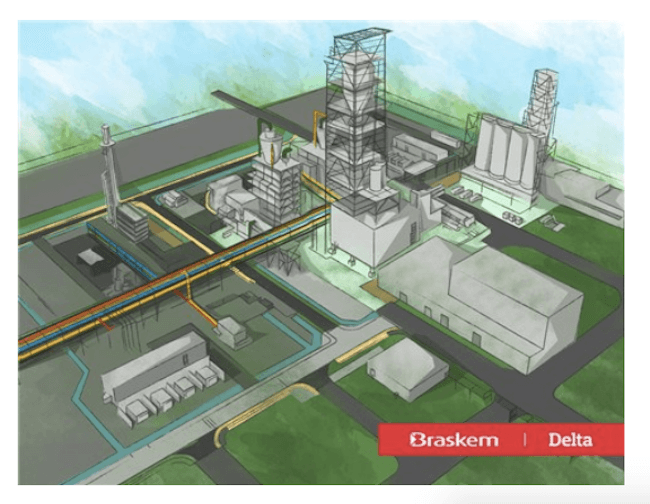

Bioplastic technology is providing manufacturers with new opportunities to transition into more sustainable products sourced from plants. That's a significant improvement from the current practice, which is to introduce more carbon into the atmosphere by using natural gas or petroleum for plastics. However, the U.S. shale gas boom has sparked new growth in the petrochemical industry, and that growth could hamper overall progress toward a lower carbon footprint.
A case in point is a new partnership between three leading companies to bring a new plant-based form of the familiar plastic polyethylene (PE) to the consumer market.
Good News About Bioplastic
In terms of climate change management, bioplastics have a major advantage over conventional petroleum-based plastic: the carbon cycle. Plants sequester carbon from the air, and much of that carbon is re-used when a bioplastic product is recycled.
The challenge is to create bioplastics that can meet, or beat, the desirable properties of conventional plastics. Those include durability, flexibility, light weight and low price.
A number of high profile manufacturers are racking up success in the bioplastic field, including Coca-Cola and Ford. The Lego Group also seems to be closing in on a sustainable replacement for its iconic plastic construction pieces.
The latest development in bioplastic brings together three companies with growing CSR track records. Those are the organic bedding company Naturepedic, the Sealed Air Corporation (developer of an innovative PE foam manufacturing process), and leading global bioplastic feedstock supplier Braskem.
The new partnership was unveiled at the Sustainable Brands Conference in Detroit last May. It involves using Braskem's I'm Green PE resin to produce foam for Naturepedic mattresses.
Naturepedic has been on the hunt for a sustainable alternative to its conventional foam crib mattresses, and it looks like I'm Green foots the bill. Here's the rundown:
Braskem's I'm Green Polyethylene (PE) is a bio-based resin made from ethanol, a renewable and sustainable resource produced from Brazilian sugarcane, and a drop-in substitute for conventional oil-based polyethylene. Cultivation of sugarcane utilizes CO2 and releases O2, which means the material has a negative carbon footprint.
Braskem expects that more than three tons of carbon dioxide from its contribution to the partnership will be sequestered for every ton of I'm Green PE foam manufactured by Sealed Air.
Naturepedic will be the first company globally to use I'm Green in mattresses. That's fitting, as the partnership's press materials credit Naturepedic with bringing Sealed Air to the attention of Braskem.
Naturepedic founder Barry Cik makes the point:
I firmly believe that making choices with the future in mind is the right, responsible behavior we all should strive for. Using renewable materials decouples us from fossil based plastics, and this is a key tenant of our company's purpose.
The new partnership is an important step for Naturepedic, which can now claim to "virtually eliminate" petrochemicals from its entire product line.
More Good News About Bioplastic
Aside from high end mattresses, the partnership could help help bioplastics compete with conventional plastics in mid or low cost consumer markets.
Considering the relatively low cost of natural gas and petroleum that's going to require a new generation of low cost, high quality bioplastic feedstocks, and another Braskem partnership provides a hint in that direction.
Last fall, Braskem made news by partnering its green plastics formula with a company called Made in Space.
Made in Space is described as the "leading developer of zero gravity 3D printers and an official supplier to NASA."
The company's 3D printing technology is is poised to play a crucial role as NASA formulates strategies for long term, self-sustaining space missions (including a Mars landing!).
As a renewable and recyclable material, bioplastic dovetails nicely with 3-D printing and the NASA self-sustainability goal.
Made in Space already has a location on the International Space Station and its first Braskem-sourced bioplastic printed product is, appropriately enough, a connector for a pipe irrigation system for growing vegetables.
The takeaway from that partnership is that niche clients like the federal government (aka, we taxpayers) can motivate companies like Braskem to continue innovating, even if the technology is too pricey for the mass market.
With the involvement of NASA, the eventual payoff for consumers could be enormous.
NASA is the same federal agency that helped sustain innovation in the U.S. solar industry for more than half a century, until researchers finally began finding the keys to manufacturing low cost solar cells at high volume.
Sealed Air is also poised for a new generation of sustainability breakthroughs. The company was founded in 1960 upon the invention of Bubble Wrap and in recent years it has leveraged its in-house laboratory network to integrate bio-based materials in its product lines.
The Shale Gas Shadow
Hopefully it won't take half a century for low cost plant based materials to begin making a serious dent in the plastics market.
For the near term, though, petrochemicals are gaining the upper hand.
Low oil prices are continuing to make it difficult for bioplastics to compete, and the U.S. shale gas boom has also emerged as a competitive force in the global market.
That trend is especially apparent in Texas, where bioplastics manufacturers have ready access to land based pipelines and global shipping routes.
ExxonMobil, for example, has partnered with Saudi Arabia's SABIC to build a new petrochemical facility they're calling the world's largest ethane cracker, in the area of Corpus Christi.
Another example is Braskem. On June 22 the company announced that it has approved construction of a new petrochemical facility named Delta, described as "the largest polypropylene (PP) production line in the Americas," in La Porte.
Braskem CEO Fernando Musa explains:
Leveraging the success of shale gas energy production, North America has among the most attractive feedstock profiles worldwide in terms of access to low cost sources of feedstock and the depth of suppliers.
In other words, local communities anticipating or actively dealing with the public health impacts of oil and gas operations will not see much relief even if low cost renewable energy shoves natural gas out of the power generation market. Companies like ExxonMobil and Braskem are already anticipating strong growth globally in the demand for non-energy products such as plastics and other petrochemicals.
Considering the issue of fugitive methane emissions from drilling operations, the new petrochemical facilities call into question the ability of the plastics industry to claim progress on reducing its carbon footprint overall.
One factor that could make a difference is the new U.S. Environmental Protection Agency methane emissions rule. It was formulated under the Obama Administration and has been hung up in court. If the rule is upheld -- and if the Trump Administration decides to enforce it -- that could result in higher prices for petrochemical feedstock, and consequently a more competitive environment for bioplastics.
A companion factor is ongoing research by the U.S. Department of Energy leading to sustainable plastics that can compete with petrochemicals, so stay tuned.
Image (screenshot): via Braskem.
REI Activates Customers on Natural Monuments, Public Lands Policy


The outdoor recreation retailer REI stepped up its public lands preservation campaign last week with an email blast to its customers, urging them to weigh in on a Trump Administration "review" of more than two dozen National Monuments established under the 1906 Antiquities Act. The public comment period closed on July 10. If REI succeeds in motivating its customers to respond in significant numbers, the email campaign could mark a new level of corporate social responsibility in which companies lead consumers into political activism.
This is not the first time in recent months that REI has asked its customers to challenge the Trump Administration on public lands preservation issues, but the story has hit the mainstream media radar, so let's take a closer look.
Public lands preservation and the Antiquities Act
Land preservation is frequently a hot button issue under the best of circumstances, and President Trump turned up the heat to the nth degree earlier this year when signed an executive order directing the Department of the Interior to "review" as many as 40 national monuments, including several marine areas. The final tally is 27 land monuments to be reviewed with the apparent aim of opening them up to commercial development, downsizing them, or even rolling back their designation.
All of the monuments were established under the Antiquities Act of 1906, which provides the authority for the federal government to set aside land in the interest of science and historical preservation. The law empowers both the President and Congress to designate national monuments, either by executive order or by legislation.
The review period ordered by the President only dates back to national monuments established since 1996, a time frame for which the executive order provides no explanation. A total of almost almost 130 national monuments have been established under the Antiquities Act, and none have ever been un-designated.
One particular area of focus is the 1.3 million acre Bears Ears National Monument in Utah, which former President's Obama designated last year shortly before his term ended.
The REI customer email
Over the past several months REI has regularly used its Facebook page to urge the public to voice its opinion on public lands issues. The new email represents a more intensive effort to reach directly to its customers.
In an email campaign sent to customers Thursday, REI -- which stands for Recreational Equipment, Inc. -- explained to buyers that they are the "public in public lands" and asked them to "tell Secretary Ryan Zinke why our public lands need to remain protected now and for future generations.""Our country's public lands define who we are. These are the places where we work, where we play and where we connect to our shared history -- and today, some of these places are in jeopardy," the note read.
A June 12 post on the REI blog underscores the central message -- "Our country’s public lands define who we are" -- and addresses the political angle:
Right now, the Department of the Interior, headed by Secretary Ryan Zinke, is undertaking an unprecedented review of 27 national monuments established by presidents from both parties since 1996, including the San Gabriel Mountains in California, Craters of the Moon in Idaho, and Bears Ears in Utah. More than 11 million acres of national public land are at stake.The Department of the Interior wants to hear from you. And we want to make it easy for you to speak up.
As with the email, the blog post includes a link to an online comment form, along with some basic guidance on personalizing the message.
REI's campaign has an interesting angle in that the many of the company's customers have a built-in interest in preserving local, state and federal park lands.
That add-on helps amplify the company's message.
For example, when Trump signed the executive order, the top-rated blog Modern Hiker published a guide for public comment, including a list of all the sites under review.
Like REI, Modern Hiker avoided partisan references but emphasized the need for political action. Under the subheading "Should I Be Worried About Any of these Monuments?" comes this observation:
Rallying an industry -- and its customers
REI is moving beyond its customer base to impact the industry as a whole, urging the The Outdoor Industry Association, of which it is an active member, to take action.
The Outdoor Industry Association registered its concern over the order in April, having already issued an open letter that threw down this gauntlet:
This open letter expresses the view of more than 200 leaders of large and small businesses in the outdoor industry, which contributes more than $650 billion annually to the U.S. economy, generates $80 billion in tax revenue and employs more than 6 million people...
OIA did not mince words regarding the importance of lands preservation including other national parks as well as national monuments (emphasis theirs):
It is an American right to roam in our public lands. The people of the United States, today and tomorrow, share equally in the ownership of these majestic places. This powerful idea transcends party lines and sets our country apart from the rest of the world. That is why we strongly oppose any proposal, current or future, that devalues or compromises the integrity of our national public lands.
Patagonia in particular staked out a leadership role in the issue even before Trump took office. The company launched a get-out-the-vote drive in advance of Election Day last year and it has not slowed down. Patagonia produced a video appeal to save Bear's Ears after Trumped signed the executive order, and in an interview with Huffington Post last month, the company's CEO Rose Marcario had this to say:
“We have to fight like hell to keep every inch of public land..."
And the winner is...
The public comment period opened on May 13 and as of June 10 -- one month before the deadline -- the Interior Department already received more than 150,000 comments, a "great majority" of which favored preservation according to Grist.com. REI was personally responsible for tens of thousands of them.That number swelled to approximately 2.5 million when the deadline closed on July 10, according to the Los Angeles Times.
Behind the numbers there is some bad news for the Trump Administration:
About 2.5 million Americans have submitted comments as Interior Secretary Ryan Zinke prepares to announce which public lands would lose protections. A large sampling analyzed by the Center for Western Priorities found just 1% of the commenters wrote to express support for the Trump plan.
Trump appears set to win the land preservation battle on behalf of the fossil fuel industry and other commercial stakeholders, but REI, Patagonia and companies like them have already won hearts and minds.
In the end, that may prove to be a far more powerful victory.
Image (screenshot): via REI.
Mars Inc. Pledges to Boost Small Farmers’ Income

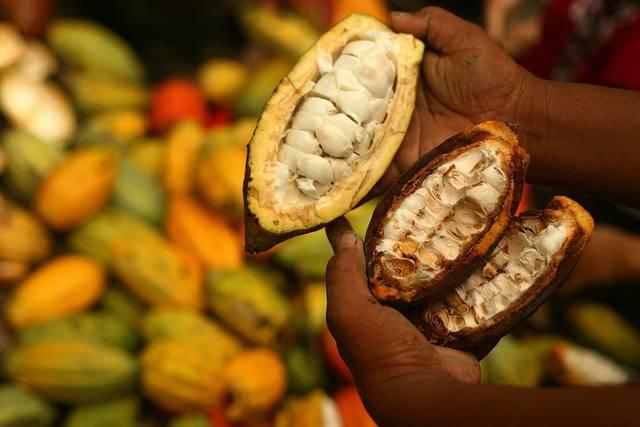
While the growth of multinationals and their complex supply chains together conjure images of sprawling industrial farms raising everything from cotton to corn to beef, the reality is that the vast majority of farms are relatively small and owned by families. The World Bank’s International Finance Corporation (IFC) has estimated that there are at least 525 million smallholder farmers worldwide. The vast majority of these smallholders are in Asia, but more of Africa’s 33 million farmers are becoming part of the global economy. Many of these farmers are mired in poverty, as the IFC has estimated that these farms have declined 25 to 40 percent in size the past half century as such lands are handed down generation by generation.
One company says it will take an active part in finding ways to boost these farmers’ income. Mars Inc. recently launched The Farmer Income Lab, which the company says will function as a “think tank” to ensure that global supply chains work for both small farmers and businesses.
This is a new direction for Mars, which in recent years has focused on a bevy of challenges ranging from reducing its carbon footprint in part by investing in renewables to drafting new anti-deforestation pledges within its supply chains such as cocoa.
But as the company’s chief sustainability officer, Barry Parkin, recently discussed in Huffington Post, a global company cannot make sustainability commitments such as those mitigating climate change while overlooking poverty. Parkin cited statistics on social media last year, during which climate change was mentioned 189 million times while in contrast, poverty only scored 7 million mentions. “This is the elephant in the room for sustainable development,” he said, “If the world is to become truly sustainable then we must end poverty.”
The Farmer Income Lab is designed to help Mars contribute to one of its United Nations Sustainable Development Goals, which is to end poverty. The company says at least 200 million smallholder farmers currently struggle to make a living while producing food for global supply chains. To that end, Mars says it will work with experts to adopt science- and evidence-based approaches in order to create new business models and frameworks that can help end the ongoing problem of farmers' poverty.
Questions this group will answer in the upcoming months and years include: factors that can help farmers boost income; the kind of targets that are realistic in order to build wealth; how can farmers embrace new farming techniques; and identifying other factors in the agriculture sector that can help improve the livelihood of farmers worldwide.
Mars claims it already has a leg up on its sustainable supply chain efforts. Currently, the company says 70 percent of its priority raw materials can be traced to origin. By 2020, Mars has promised to procure 100 percent of its cocoa from certified sustainable sources, with similar goals promised on ingredients such as seafood, rice, tea and coffee. Meanwhile, the company has partnered with Danone to finance a $137 million initiative to build more sustainable supply chains within Africa, Latin America and Asia.
As Mars is amongst the top global food companies that produce food across the globe, the impact the company and its peers can have on poorer countries has long centered these firms in the crosshairs of NGOs such as Oxfam. The British anti-poverty coalition, however, appears to be convinced that Mars is doing the right thing on the responsible sourcing front. “This is a courageous step for Mars to take,” said Judy Beals, Private Sector Department Director at Oxfam in a public statement. “We believe this initiative holds a lot of promise, contributing to meaningful change for farmers living in poverty.”
Image credit: World Agroforestry Center/Flickr
Green Mountain Power Sees Opportunity In Renewables
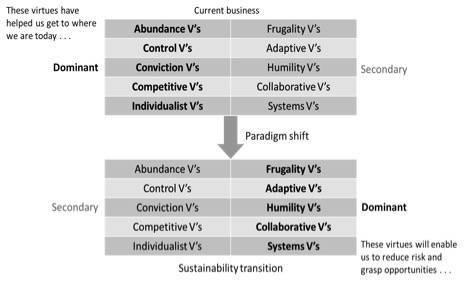

By Matt Mayberry and William Throop
This is a transitional time for businesses, with leaders at companies of all sizes facing a complex tangle of economic, social, and environmental challenges. Meeting them requires new behaviors and skills that can help enterprises flourish in an uncertain, changing, collaborative, connected, and caring world – and you might be surprised to learn that a 124-year-old utility company is setting a great example.
Green Mountain Power can seem more like a disruptive high-tech start-up than Vermont’s largest electric utility. In recent years, it has emerged as a leading national innovator in renewable energy, demonstrating how electricity can be generated, stored, and distributed in ways that are cheaper, cleaner, and more resilient to interruptions.
While some utilities are resisting the shift to renewables, GMP is leaning into it, seeing an opportunity to transition its business model from delivering electrons to providing energy services. The company’s eHome initiative offers homeowners an easy and affordable energy makeover with a package that includes energy efficiency, solar power, and smart controls to optimize and monitor real-time energy use – all financed through the customer’s utility bill. This initiative involves customer-focused collaborations with partners, including NeighborWorks (a non-profit that conducts energy audits and provides low-interest loans for energy improvements), and numerous local solar contractors.
GMP is also one of the first utilities in the nation to offer customers Tesla’s Powerwall home battery to reduce peak-load usage and have back-up power during outages (handy during the stormy Vermont winters.) It even pays customers a monthly fee to utilize the energy stored in their batteries during peak load times.
While these innovations and partnerships help keep rates low, they also mitigate one of GMP’s risk factors – that in coming decades, decentralized energy will make it easier and cheaper for customers to leave the grid. This would force utilities to raise rates to maintain investor returns, driving more customers off-grid. By bundling smart-grid services GMP is making it cheaper and more convenient to remain on the grid.
GMP’s CEO Mary Powell credits the company’s ability to transform threats into opportunities to fundamental cultural changes over the last 20 years. When Powell was first hired as the head of HR in 1998, Green Mountain Power had a typical utility culture: hierarchical, slow-moving, control-oriented, and lavish at the C-suite level. Powell set out to create a more humble, adaptive, fast-paced and collaborative environment.
In a recent article, we argued that in order to thrive in this period of global transition toward sustainability, most business cultures will need to make just this kind of dramatic shift. Our research indicates that the managerial virtues that have driven success over the last century are less suited to the challenges of our times and that a different set of “sustainability virtues” requires more emphasis.
We use the term “virtues” quite broadly to describe dispositions to think, feel and act in skillful ways that promote the aims of a practice. Virtues contain both visible elements (knowledge, skills, behavior) and invisible ones (subconscious beliefs about success, predispositions to perceive and respond in certain ways). For both individuals and organizations, virtues guide behavior – especially when no one is watching.
GMP’s story illustrates five clusters of virtues that maximize managers’ abilities to grasp the opportunities of our times.
Systems Virtues enable managers to focus on the dynamics of whole systems and allocate praise and blame in light of such dynamics. They assume that most of the major issues companies face are best addressed by diverse teams that understand the organization as a whole system, nested within global economic, social, and ecological systems.
These systems are complex enough that managers need to emphasize Humility Virtues (like open-mindedness, curiosity, and gratitude for what we learn from others) in order to avoid risks associated with their blind spots.
Leaders also need to embody Collaborative Virtues that foster innovative cross-sector partnerships – virtues such as sensitivity to audience and context, fairness in the distribution of benefits and burdens, creativity in seeking compromise, and graciousness in disagreement and confrontation.
The transition to sustainability is likely to involve a daunting array of technological, economic, social and ecological disruptors. To adapt, company cultures will need to embody Adaptive Virtues: resilience, flexibility, courage, hopefulness, creativity, and self-control. These help us deal more effectively with limits to our control in a complex system.
Lastly, Frugality Virtues such as efficiency, waste aversion, thrift, and a focus on nonmaterial goods will be needed to effectively navigate planetary boundaries and economic upheavals.
We are not suggesting that firms abandon the traditional virtues that have enabled business success. Rather businesses will benefit from shifting the balance away from overly-competitive, controlling tendencies, and toward more collaborative, humble, and adaptive habits.
This kind of shift doesn’t imply wimpiness or poor performance. Rather, the mindset opens new opportunities for creating value – both financial and social. The case of Green Mountain Power illustrates how the shift toward sustainability virtues can drive business model innovation that is both disruptive and beneficial to society.
We often look for technological and policy solutions to address global challenges like climate change. But these alone are unlikely to get us to sustainability. We as leaders also need to transform our daily decision-making and open our eyes to the emerging opportunities of these times. Evolving our business virtues is an important step in that direction.
Matt Mayberry, Ph.D., is President of WholeWorks, a firm focused on strategic leadership development. He specializes in experiential learning using business simulations as “practice fields” to provide senior managers with a safe and realistic environment for building their leadership capabilities and accelerating change.
William Throop, Ph.D., is Professor of Philosophy and Environmental Studies, and Director of the Environmental Studies program at Green Mountain College in Poultney, Vermont. He specializes in environmental ethics, theory of knowledge, and sustainability education, and has written numerous articles and book chapters on these subjects.
Image credit: Green Mountain Power
A Transactional Approach to Employee Engagement


By Bruce Tulgan
Today's professional relationships are governed by an increasingly short-term and transactional logic. That’s true for people of all ages. But for those of younger generations, they have never known it any other way. Segmented as a market from birth and armed with credit cards, millennials have been taught to think of themselves as customers in virtually every sphere. Even in their roles as students, given the high cost of education, many young people think of themselves as buying and consuming the learning services sold by schools.
When they arrive at the workplace, short-term transactional thinking can be second nature. They are still thinking like customers. Sometimes when I point this out to managers, they’ll say, “Yeah, well, they’re not paying us. We are paying them. So what currency do they bring to the transaction?”
Of course, you want to get more work and better work out of every one of the people on your team. For their part, your employees want to earn more of what they need and want. The best solution? Reframe your mindset in terms of transactional logic – both you and the employee have something you want, and something to offer. Stop “paying” your employees and start “buying” their results, one by one. The more you trade results for rewards, the more reliable you can count on their performance will be. The smaller the increments, the more effective it will be. “I had a manager who would always say to me, ‘What do you need from me?’” one young employee told me. “I’d always know she was going to get me back with, ‘Great. Here’s what I need from you.’ She did that with everybody. She knew I needed the money and went out of her way to help me make more money, which was really great of her.
The critical element when it comes to rewarding your employees based on performance is letting them know, explicitly, that rewards are tied to concrete actions within their own direct control. This might remind you of the old-fashioned pay scheme of piecework in which individuals are paid on an agreed-on amount for each defined unit of work they produce. The seamstress might be paid per stitch or per finished garment. The accountant might be paid per tax return prepared. And so on. The key to your success will be defining those measurable pieces of work and setting a price per piece.
Perhaps, if given the choice, many individuals would opt for a safe lifelong employment relationship with secure, long-term vesting rewards. The problem is that you won’t find anyone who actually believe that this is a real option in today’s world. Nowadays, it sounds like an absurd claim on its face – largely because it is. Therefore, most employees are concerned about all the rewards they might be able to extract from their immediate bosses in the short term. However, younger employees are also acutely aware that the compensation systems and language of their employers almost always revolve around the traditional elements of compensation and benefits; pay scales or salary, health care plans, 401ks, and the like. They often ask about traditional rewards because they are aware that employers only know how to talk about traditional rewards.
But the real performance drivers for many young employees are the short-term, special rewards you negotiate in exchange for their short-term above-and-beyond performance. A senior engineer shared this story with me: “One of the engineers on my team, a young lady who talked about little else but flextime and work-life balance, pretty much dropped everything for two months and lived here around the clock working on a killer deadline for me. Why? I arranged for her to take six weeks off, two unpaid, in a row after the project was finished. That was all it took. She was here around the clock for two months, then she disappeared for six weeks and came back happy as could be. The other two guys on that team? They just wanted a bonus check. They all want something different. But they all want something, and most of them are willing to work for it.”
The best approach to negotiate these special rewards in very small increments. You want to be able to say, “Okay. I’ll do that for you tomorrow if you do X for me today.” Work a particularly undesirable shift? Work longer hours? Work with a difficult team? Do some heavy lifting? Clean up some unpleasant mess? Then deliver the reward in question as soon as you possibly can. Immediate rewards are much more effective than those that require a wait, because they provide a greater sense of control and a higher level of reinforcement. Employees are likely to remember the precise details and context of the performance and are therefore more likely to make the connection the next time the desired performance is called for. Plus, they won’t spend time wondering whether their performance has been noted and appreciated, and they will therefore be less likely to lose the momentum generated by that short-term success.
That does not mean that everything is open to negotiation. You should be rock solid on your basic standards and requirements. What is not negotiable? What is essential? What is not acceptable? That’s your starting point. From there, take control of the ongoing negotiation and help your employees earn those special rewards they want so much. In the process, you’ll get so much more, and better, and faster work from them, one day at a time.
Bruce Tulgan is an adviser to business leaders all over the world and a sought-after keynote speaker and seminar leader. He is the founder and CEO of RainmakerThinking, Inc., a management research and training firm, as well as RainmakerThinking.Training, an online training company. Bruce is the best-selling author of numerous books including Not Everyone Gets a Trophy (Revised & Updated, 2016), Bridging the Soft Skills Gap (2015), The 27 Challenges Managers Face (2014), and It’s Okay to be the Boss (Revised & Updated, 2014). He has written for the New York Times, the Harvard Business Review, HR Magazine, Training Magazine, and the Huffington Post. Bruce can be reached by e-mail at [email protected], you can follow him on Twitter @BruceTulgan, or visit his website www.rainmakerthinking.com.
Rising green bond market supports eco-friendly projects

